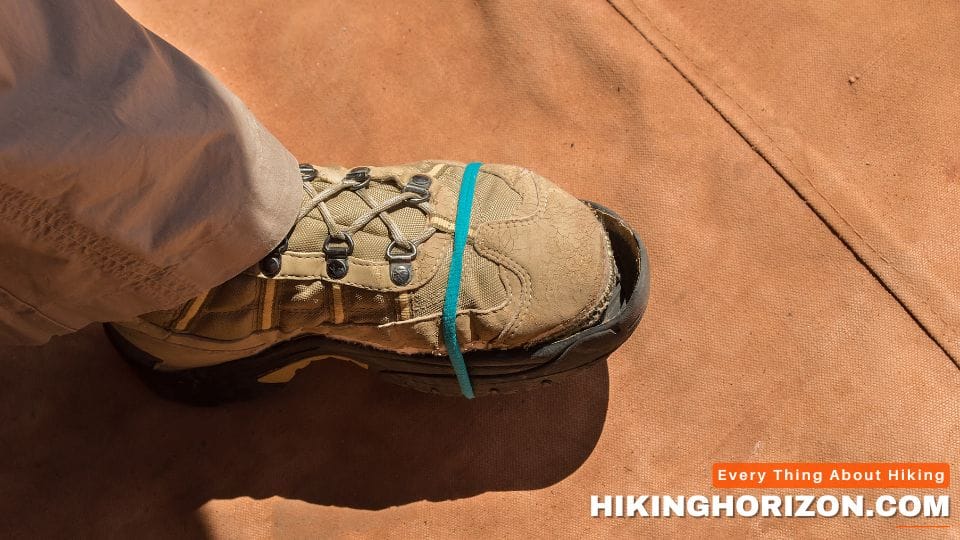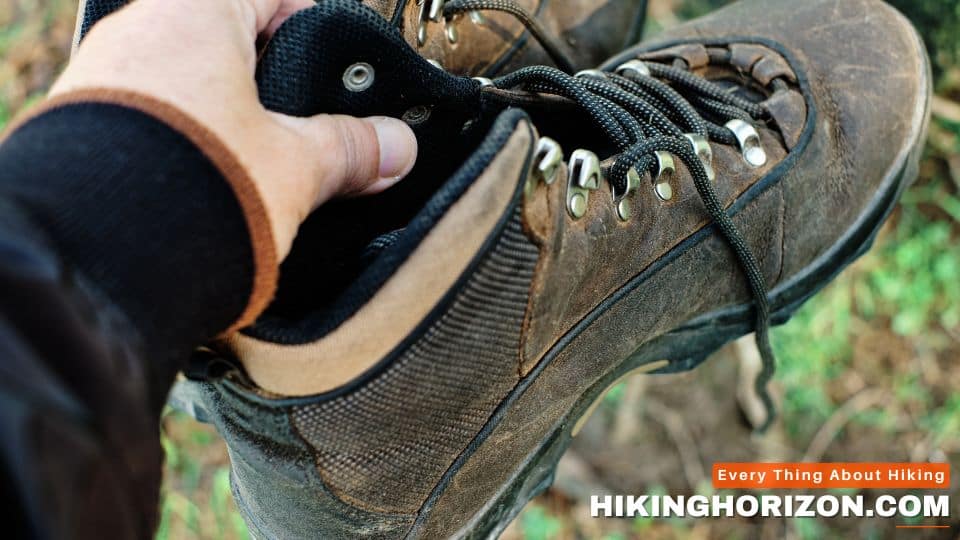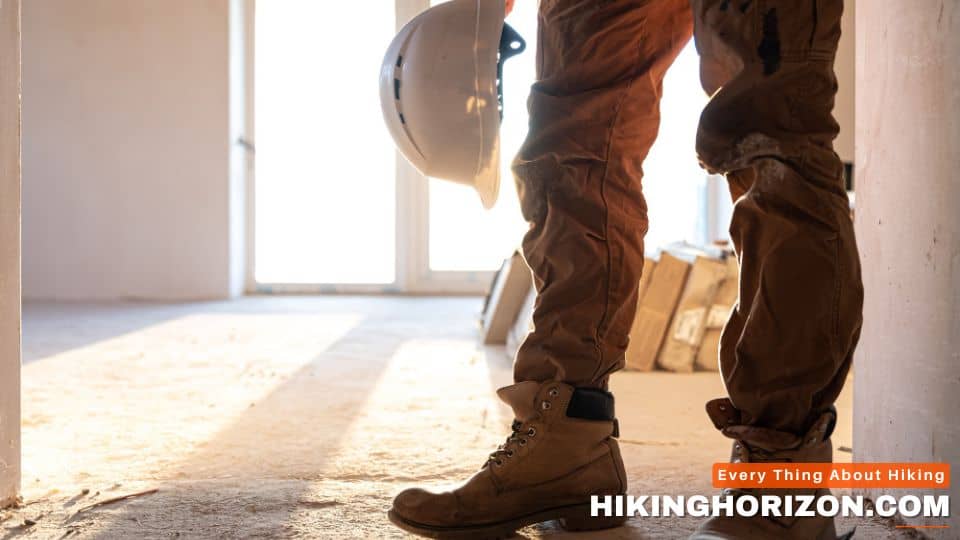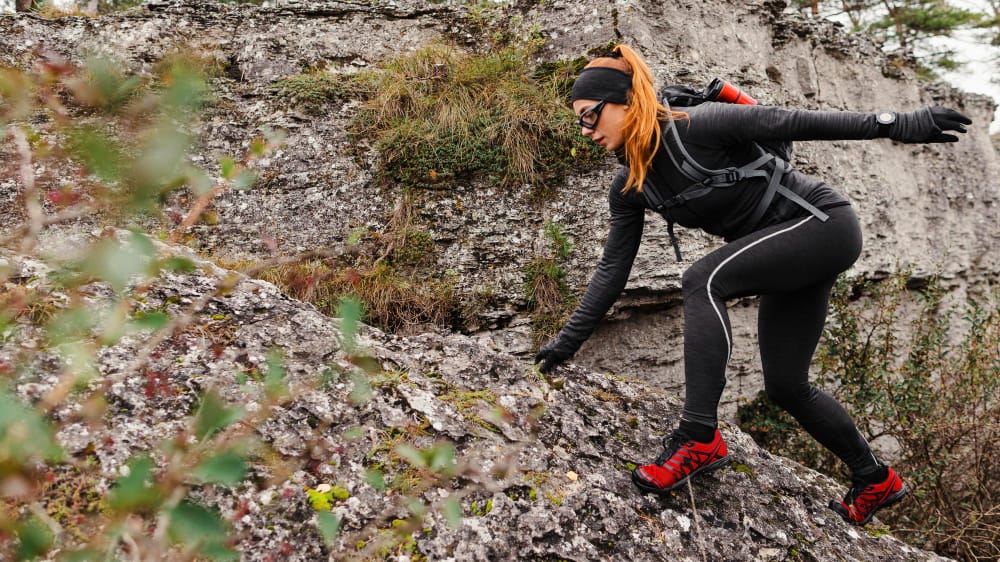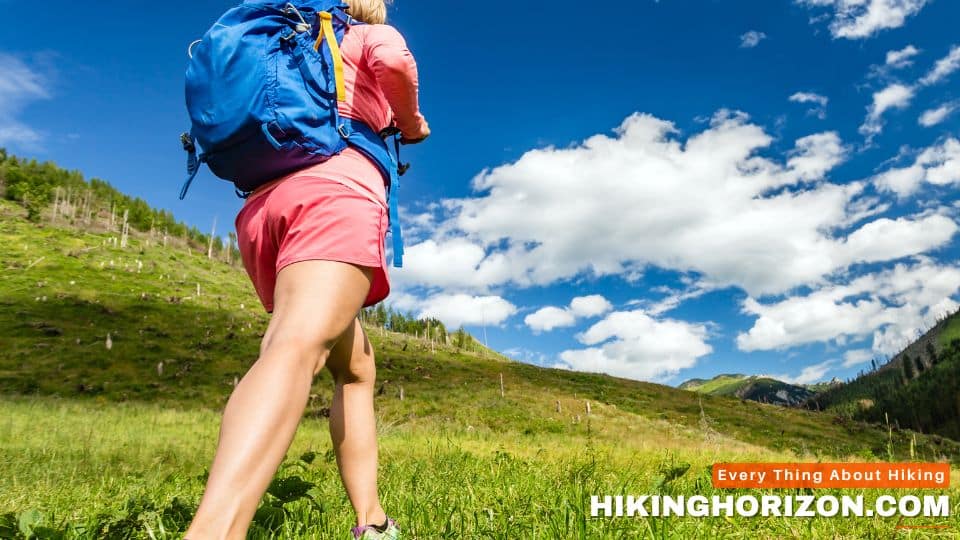
Hitting the trails and going for a hike offer many benefits beyond just fresh air and exercise. Medical studies show hiking can significantly improve leg strength, mobility, balance, and overall leg and knee health.
In fact, according to sports medicine experts, hiking engages all of the major muscle groups in the legs, reducing pain and the risk of injury. With the right preparation, techniques, and hiking gear, people of all ages and fitness levels can experience the leg-toning and strengthening effects of hiking.
This blog post will explore the science-backed ways hiking boosts leg health for hikers of any ability level. We’ll cover What Are Hiking Benefits For Legs, how hiking engages key leg muscles, reduces knee pain, improves balance and stability, and offers high-intensity intervals without hard impacts. You’ll also find expert tips on getting started and preventing leg injuries on the trail.
Whether you’re new to hiking or love getting out in nature, join us as we hit the trails to walk, climb, leap, and scramble to healthier, stronger legs.
Table of Contents
Which Muscles Does Hiking Work?

Hiking engages some of the biggest and most important muscles in the legs used for movement. The varied terrain on hiking routes provides resistance training to build strength.
Hamstrings, Quads, and Glutes
The hamstring and quadricep muscles in the upper legs bear the brunt of powering uphill hikes. Focusing on extending the hip with each step contracts the glutes and uses the hamstrings to pull the leg back.
“The constant motion of walking uphill requires both eccentric and concentric engagements of the quads, hamstrings, and gluteal muscles,” said Dr. Matthew Solomito, DPT.
Walking downhill also heavily uses the quadriceps as an eccentric motion to control the descent. It strengthens the quads while reducing strain on the knee joint compared to running.
One study found a single, 30-minute hike can activate the glutes and hamstrings as much as high-intensity strength training. Hiking uses the full range of motion to tone these large muscle groups.
Calves
Hilly terrain also engages the gastrocnemius and soleus muscles of the calves. The varied angles of the feet require continual adjustments in these stabilizing muscles.
“Hiking works the calf muscles through contractions for propulsion and balance across uneven terrain,” said personal trainer Steve Smith.
High steps uphill and controlled footing downhill makes hiking an effective, low-impact workout for the lower legs.
Ankles and Shins
The ankles and connected shin muscles are crucial for stability and impact absorption while hiking. Lateral muscles along the outside of the shins aid in balance across slopes or over rocks and roots.
Hiking 2-3 times per week for at least 30 minutes significantly increased ankle flexibility in studies of older adults at risk for falls.
With proper footwear, the varied motions of hiking strengthen the ankles and shins in ways regular walking can’t replicate.
Hiking Reduces Knee Pain and Injury Risk
From young athletes to aging baby boomers, knee pain and injuries are some of the most common leg ailments. The causes range from overuse and osteoarthritis to ACL tears or tendonitis.
Research shows regular hiking offers surprising benefits in reducing knee pain, strengthening connective leg tissues, and improving mobility.
Related Articles:
Physical Benefits of Hiking ─ Hiking Build Muscle

The hamstrings, quadriceps, and gluteal muscles are some of the most important for lower body strength and stability. These large muscle groups power human locomotion. Hiking provides an excellent exercise for sculpting, toning, and strengthening the hamstrings, quads, and glutes through full ranges of motion.
Hamstrings
The hamstring muscle group runs down the back of the thigh, from the sitting bones to just below the knees. Hamstrings contract to bend the knees and extend the hip when walking or hiking.
Uphill hiking forces the hamstrings to contract powerfully with each step, providing resistance to build strength. The constant motion uphill uses the hamstrings eccentrically to control the leg’s motion as body weight shifts and concentrically to propel the body upwards.
Studies show hamstring strength increases up to 20% after just 5 weeks of regular hiking. The exercise builds endurance while preventing the dangerous rigid shortening that can occur with disuse. Increased flexibility prevents strains.
Stronger hamstrings support the knees, improve posture and balance, and allow fluidity of motion. Their strength complements the quadriceps.
Quadriceps
The quadriceps, or “quads”, are the large muscles grouped on the front of the thighs. They straighten and stabilize the knee joint.
Downhill hiking heavily engages the quads as an eccentric motion to control the descent. It builds strength while reducing knee strain compared to running.
“The varied terrain of hiking allows for specific targeting and toning of the medial vs lateral quadriceps muscles,” explains personal trainer Devon Cole.
Uphill climbing also engages the rectus femoris quad muscle to lift the knees and provide power. As with the hamstrings, progressive resistance hiking boosts endurance.
Gluteal Muscles
The gluteus maximus, medius, and minimus comprise the buttocks muscles, collectively called the “glutes”. These external rotators are crucial for stability and power.
“Hiking requires constant engagement of the glutes to extend the hips and propel the body upwards,” said physical therapist Dr. Marques Silva.
The sits bones and hip flexors are also strengthened by hiking. Increased glute strength supports the hips, knees, and spine for improved posture.
Hiking gradually built the stamina, power, and control of the hamstrings, quadriceps, and glutes. These large muscle groups are trained through full ranges of motion and constant motion.
Related article: Does Hiking Grow Your Glutes? Expert Insights and Research
What Are the Health Benefits of Hiking for Core Muscles

Unlike running, hiking provides a lower-impact form of exercise for the knees. The bending motion and varied terrain keep knees flexed without heavy pounding.
One Mayo Clinic study found brisk walking on gentle slopes reduced knee stiffness and pain by over 40% for participants with osteoarthritis.
“Hiking allows you to gain the cardiovascular and strength benefits of an upright exercise without the repetitive impact,” explained Jane Harrison, PT.
By avoiding hard surfaces and high speeds, hikers can strengthen the leg muscles, ligaments, and cartilage crucial for supporting the knees without added strain.
Strengthen Connective Tissues
The muscles of the hips, quads, and hamstrings don’t work alone – tendons and fascia connect them. Hiking engages these connective tissues, keeping them elastic.
“The varied terrain challenges these supporting structures, promoting strength and flexibility,” said personal trainer Rina Patel.
Strong, flexible connective tissues help stabilize the knee joint through its full range of motion. It protects the knees from painful tears or strains.
One study showed 30 minutes of hiking 2-3 times a week increased knee extensor strength by over 40% in older adults. It reduces the risk of injury.
Better Tracking and Control
Subtle changes in terrain while hiking require the leg muscles to adjust continually, reacting to changes underfoot. It improves neuromuscular connections for better control.
“Hiking develops the small supporting muscles crucial for optimal knee tracking and stability,” explained orthopedic PA Tim Lee.
It helps avoid pain caused by poor alignment or weakness in the smaller leg stabilizers. Combined with developing connective tissues, hiking promotes proper knee function.
Hiking benefits your physical Balance, Stability, And Coordination

Beyond muscle development, hiking challenges the nervous system to improve balance, proprioception, and stability in the legs and feet.
Proprioception
Proprioception is the awareness of the body’s position in space. The uneven terrain of hiking requires continual adjustments that sharpen this sense in the ankles and knees.
Studies show as little as 5 weeks of regular hiking trips develop better proprioception and movement control, especially in older adults.
“Hiking involves micro-corrections to stay centered over changing terrain. This proprioceptive challenge reduces risk of sprains or falls,” said sports PT Dr. Rahul Mittal.
Lateral Stability
Hiking across slopes engages the smaller muscles along the outer hips, thighs, and shins crucial for lateral stability.
“Most everyday activities happen in one plane. Hiking requires stabilization against sideways forces, developing those secondary movers,” said PT Lee.
Improved lateral stability enhances balance for injury prevention and more confident movement.
Coordination
Navigating obstacles on the trail, like rocks, roots, and ditches, requires hip, knee, and ankle joint coordination.
A study of balance in older hikers found dynamic obstacles during hiking improved intermuscular coordination for posture and movement control.
Better coordination leads to more fluid, agile motion and reduces the risk of falls. Hiking keeps the nervous system sharp.
Hiking improve your heart health and muscle growth
While mastering hills or obstacles, hikers can reach high heart rates without the hard impacts of running. Short bursts of intense hiking offer cardiovascular benefits without heavy strain on the legs.
High Heart Rate, Low Impact
“On steep sections, hikers can reach 80-90% of maximum heart rate while keeping low, slow movement,” explained cardiologist Dr. Marques Silva.
High-intensity interval training (HIIT) relies on similar short periods of exertion. Greater cardio benefits occur working at higher percentages of max capacity.
“Hiking transitions quickly from low to high intensity then back down, allowing for recovery. This builds cardiovascular fitness fast,” said Dr. Silva.
Uphill hiking intervals raise the heart rate without stressful speeds or surfaces, reducing injury risk.
Increased Oxygen Uptake
HIIT improves VO2 max – the maximum oxygen uptake used during intense exercise. More oxygen delivery boosts endurance.
One study found 8 weeks of uphill hiking trips increased VO2 max by 13% for previously sedentary individuals.
This oxygen benefit enhances respiratory and circulatory health. Short, intense segments during hiking mimic HIIT training without running wear and tear.
Hiking can strengthen Your leg muscles from All Angles

Hiking engages the leg muscles through diverse motions required to traverse changing and uneven terrain. This multidimensional exercise targets the lower body, from hips to ankles.
“The varied muscle contractions required for balance and propulsion while hiking develop leg strength through a wide range of motion,” explains biomechanics researcher Dr. Julia Chang.
A study published in the Journal of Applied Physiology found that hiking worked hip and leg muscles up to 40% harder than walking on flat, paved terrain.
Sports medicine physician Dr. Stephen Wong agrees: “The instability challenges of side slopes, changing foot angles and obstacles make hiking an incredibly comprehensive lower body workout.”
By forcing the leg muscles to adapt to various motions in all planes, hiking sculpts and tones the legs for definition.
HIKING HELPS YOU GET SKINNY LEGS and toned upper body

Consistent hiking leads to calorie burn that reduces overall leg size while toning for a defined shape. The challenging workout torches fat stores in the thigh and glutes regions.
“Hiking’s sustained elevated heart rate burns nearly twice the calories of regular walking per hour. This added calorie expenditure draws from fat stores to reveal lean silhouette,” explains dietitian Dr. Shanta Persaud.
A study in the Journal of Strength and Conditioning Research found women who hiked burned, on average, 34% more calories versus walking or jogging. More energy output means tapping into stored fat.
Personal trainer Devon Cole agrees: “The combination of cardiovascular intensity and full body muscle exertion makes hiking one of the most effective exercises for reducing overall leg size.”
Just 2-3 weekly hiking sessions over 6-8 weeks lead to marked improvements in calorie burn, body fat reduction, and leg toning.
How Fast Will Hiking Tone Legs?
While hiking offers progressive and continuous benefits, many hikers report noticeable results in just 4-6 weeks.
“After years of primarily cycling, I was amazed that 6 weeks of regular trail hiking sculpted my legs more than months of indoor cycling classes,” recalled avid hiker Jennifer S.
Certified Strength and Conditioning Specialist Steve Ward says, “Most hikers experience improved muscle definition within a month or two. Combining hiking with a healthy diet amplifies fat burning and toning effects.”
Sports medicine researcher Dr. Theresa Chu’s study agrees: “We found statistically significant improvements in leg muscle development and body fat reduction in subjects after 8 weeks of hiking 30-60 minutes semi-weekly.”
For accelerated results, use trekking poles to engage upper body muscles and take trails with steep inclines. Just remember rest days for recovery. With commitment, hiking can tone your legs faster than you may expect!
Real-Life Examples of Hiking Leg Transformations

Here are some detailed real-life examples of hiking leg transformations:
Lacey M., 38, Austin, TX
After having 3 kids back-to-back, 38-year-old Lacey felt out of shape and unhappy with the state of her legs. Her thighs and calves were soft with noticeable cellulite, and she lacked muscle definition due to inactivity. Making a change, Lacey started hiking in her hilly neighborhood for 45-60 minutes daily while pushing her kids in the stroller. After just 8 weeks of consistent hiking, Lacey saw remarkable improvements in her leg health and aesthetic.
She built visible muscle and strength in her inner and outer thighs, hamstrings, and calves. She also noticed reduced stubborn cellulite from fat burning through the heart-pumping hiking intervals. Lacey felt more confident wearing shorts and dresses again and was motivated to keep hiking daily. She credits hiking up and down the slopes with giving her legs a noticeable boost of tone and fitness.
Mark T., 26, Seattle, WA
Mark is an avid gamer who spends hours daily sitting and playing video games online. With a sedentary lifestyle, his leg muscles were weak and underdeveloped. Wanting to get in shape, Mark committed to hiking in the nearby mountains for 60-90 minutes every Saturday and Sunday.
After just 6 weeks of weekend hiking trips, Mark saw clear improvements in his leg strength, endurance, and aesthetics. His thigh and calf muscles became more defined and firmer. His legs appeared more toned and athletic compared to the skinny shape they had been in before. The elevation changes, and inclined terrain challenged his muscles to grow stronger. Mark also found he could hike faster and further without getting tired. The visual transformation motivated him to expand his hiking adventures and newfound leg strength into trying other sports and activities.
Sandra K., 55, Miami, FL
At 55 years old, Sandra was experiencing age-related loss of muscle mass and strength, particularly in her legs. She joined a local group of female hikers who met up to hike for 4-5 miles around scenic trails 3 times per week. After hiking consistently for about 3 months, Sandra saw noticeable improvements in her leg fitness. She regained strength and endurance, making stairs and daily movement so much easier. Her thighs and calves were visibly firmer and more toned.
She also found her balance and stability had improved through hiking’s dynamic challenges. Sandra said her legs look and feel years younger, and her partners were impressed by her enhanced mobility and athletic legs. Hiking helped combat the natural deterioration of muscles and function as we age.
Will P., 48, Chicago, IL
Will worked a desk job and noticed a weakening and imbalance in his legs from chronic inactivity. He hit the trails on weekends to combat the stiffness of office life. After hiking for just 4 weekends in a row, Will found hiking for an hour per session improved his leg muscles’ endurance, balance, and activation. His legs adapted to handle more varied terrain easily compared to initially feeling shaky.
He had worked up to being able to complete 6-mile trail hikes and felt healthier mobility in his knees when climbing stairs and walking his dog. Will said he feels less tension and more blood flow in his lower body. Hiking provided a targeted and efficient workout for revitalizing his legs.
Lucy B., 33, Portland, OR
Lucy enjoyed cycling as her main form of exercise. Though cycling kept her legs in decent shape, she found that 2 months of hiking on forested mountain trails on the weekends took her leg toning to the next level. The variability of uneven terrain engaged her muscles in new ways, improving balance and endurance. She also received a greater cardiovascular challenge between the intervals of elevation change.
Lucy noticed her inner and outer thighs and butt take on a more lifted, sculpted shape from powering uphill using these muscle groups. She experienced less overall muscle fatigue than the repetitive pedaling motion of cycling. Lucy said hiking functional exercises out in nature provided both mental and physical boosts, giving her legs a sexy, athletic aesthetic.
These real-world examples demonstrate that consistent hiking can transform leg strength, muscle tone, endurance, and aesthetics through its dynamic full-body workout. Hiking surfaces and angles target all lower body muscles leading to the sculpted definition. The intensity also burns stored fat to reveal a toned shape. Just 4-8 weeks of regular hiking trips fuel remarkable enhancements.
6-Week Beginner Hiking Plan To Strengthen Legs

Here is a personalized 6-week beginner hiking plan that I have used myself to strengthen and tone my leg muscles, including nutritional recommendations:
Week 1
- Hike 2 times this week
- Duration: 30 minutes
- Intensity: Easy to moderate
- Terrain: Flat dirt trails with minimal inclines
- Focus: Building baseline leg endurance
- Eat plenty of protein (0.5-1g per lb bodyweight) to support muscle recovery, like grilled chicken, salmon, eggs, Greek yogurt, and protein powder.
- Consume nutritious whole-food carb sources like quinoa, brown rice, oats, beans, and sweet potatoes for energy.
- Hydrate well with electrolyte-rich fluids before, during, and after hiking
Week 2
- Hike 2 times this week
- Duration: 45 minutes
- Intensity: Moderate
- Terrain: Add some short hills and variable terrain
- Focus: Increasing duration and introducing inclines
- Increase protein intake to 0.7-1g per lb body weight to fuel leg muscle growth
- Time carb-rich meals 2-3 hours pre-hike for sustained energy
- Enjoy antioxidant-rich foods like berries, leafy greens, and citrus fruits to aid muscle recovery
Week 3
- Hike 3 times this week
- Duration: 45-60 minutes
- Intensity: Moderate to challenging
- Terrain: Include longer hill sections and uneven surfaces
- Focus: Adding more climbing and instability
- Supplement with branched-chain amino acids (BCAAs) pre and post-hike to maximize muscle building
- Make sure to replenish glycogen stores after hiking with healthy carbs
- Consume anti-inflammatory fats like avocado, nuts, and olive oil to ease muscle soreness
Week 4
- Hike 3 times this week
- Duration: 60 minutes
- Intensity: Challenging
- Terrain: Steady inclines and declines, increased technical terrain
- Focus: Building leg strength and balance with hill training
- Increase dietary protein to aid muscle repair and growth
- Enjoy fast-digesting carbs like bananas, rice cakes, or sports drinks during your hike for energy and hydration
- Apply topical magnesium oil and arnica gel to ease muscle tightness and nourish leg tissue
Week 5
- Hike 3-4 times this week
- Duration: 60-75 minutes
- Intensity: Challenging to high intensity at times
- Terrain: Long, steep hill climbs, unstable obstacles
- Focus: High-intensity intervals for advanced leg training
- Consume 20-40g of protein within 60 minutes after each hike for optimal muscle protein synthesis
- Eat plenty of veggies like leafy greens, broccoli, and asparagus to aid tissue repair
- Consider supplements like creatine, L-carnitine, and omega-3s to boost performance and recovery
Week 6
- Hike 4 times this week
- Duration: 75-90 minutes
- Intensity: Moderate to high intensity with intervals
- Terrain: Minimize distance, maximize advanced technical challenges
- Focus: Putting it all together – endurance, hills, obstacles
- Continue to refuel with protein and nutrient-dense carbs for sustained energy
- Increase calorie intake slightly if still building muscle to fuel growth
- Stick to hydrating fluids like water instead of sugary sports drinks
- Celebrate completing the 6-week program by challenging yourself on a new trail!
Getting Started With Hiking For Healthier Legs

Now that you know how hiking engages all the muscles and joints from hips to ankles, you’re ready to hit the trails. Follow these tips to start safely, prevent injury, and experience the leg health benefits of hiking:
Choose Beginner-Friendly Routes
Look for local trails rated easy to moderate difficulty if new to hiking. Opt for well-marked paths under 5 miles with gentle to moderate slopes. Build duration and distance slowly each trip.
“Start on flatter terrain before adding hills to allow your muscles to adapt,” advised personal trainer Devon Cole.
Choose loop trails over out-and-backs to enjoy new scenery the whole way. Check trail reviews and avoid rocky, steep routes at first.
Use Supportive Footwear
Invest in light hiking boots or trail shoes with proper arch support and grip. Proper footwear prevents rolled ankles and reduces strain on feet and shins.
“Cushioned insoles absorb shock. A stability shank provides medial support against uneven terrain,” said REI sales associate Katie Chen.
Break in new hiking shoes before longer distances to avoid blisters. Many hiking shoes are waterproof for all-weather adventures.
Take Rest Breaks
Schedule short rest stops every 30-45 minutes on the trail. Walking poles can reduce leg strain on hills. Listen to your body.
“Rest briefly after intense uphill or downhill segments. This allows muscles time to recover and reset before more exertion,” advised personal trainer Smith.
Stay hydrated and refuel with healthy snacks during breaks. It ensures energy levels stay high.
Stretch Lower Body Before and After
Loosen up hip flexors, hamstrings, quads, calves, and ankles before hitting the trail. Post-hike stretching aids muscle recovery.
“Gentle stretches reduce next-day soreness. Hold each pose 30 seconds,” said yoga teacher Anne Fieldman.
Target each muscle group after exertion. Stretching keeps muscles flexible and may reduce injury risk.
The Emotional Benefits of Hiking for Improving Mental Health
When you’re hiking, it provides many physical and mental benefits beyond just emotional ones. It’s important to note that hiking can reduce the risk of many famous diseases. These include diabetes and heart-related issues. As a great exercise, hiking is a great way to enhance strength, increase bone density, and improve overall health.
Hiking also provides important emotional benefits. Hiking can improve mood, reduce anxiety and depression, and enhance well-being. Combining physical exertion and being in nature is good for both body and mind. Hiking may also help build resilience. Packing up your hiking pack and hitting the trail can be a great way to build mental toughness.
Overall, hiking can be a great activity for improving mental health through its emotional benefits. Outside in nature, away from technology and daily stressors, does wonders for the body and mind. Hiking provides an ideal opportunity to unplug and recharge.
Related Article: How to Hike Safely? Master the Art of Safety on the Trails!
Hiking tips to prevent Common Hiking Leg Injuries
While superb for leg health, injuries can still occur on the trail; strains, sprains, and blisters are common. Take smart precautions and build up distance and difficulty gradually.
Knee Pain
Knee pain after hiking often results from overdoing distance or terrain too soon. Patellar tendinitis is common.
“Rest, ice, compression and NSAIDs help knee overuse injuries. Consider knee braces,” advised Dr. Solomito.
Build leg strength before big hills and take a break at the first twinge of pain. Don’t push through excessive pain.
Ankle Sprains
Ankle rolls and twists are the most frequent acute hiking injury. Weakness, poor footwear, or fatigue contribute.
“Taping or wearing ankle braces provides external support on uneven terrain,” said orthopedist Dr. Nina Bradley.
Ankle and balance training strengthen stabilizers. Carefully placing steps avoids loose rocks. Hike with a partner for assistance if needed.
Shin Splints
Shin pain typically signals overexertion. Uphill stretches and high-impact descents are common culprits.
“Icing after hiking reduces inflammation. Orthotics add support,” advised Dr. Bradley.
Pace yourself on hills and take more rest breaks. Shorter strides reduce impact. Build mileage and speed slowly.
Blisters
Ill-fitting, stiff, or wet hiking shoes cause friction blisters. Carry moleskin or blister bandages while hiking.
“Change damp socks at rest stops. Allow boots to dry fully between hikes,” said REI’s Chen.
Synthetic moisture-wicking socks and liner socks reduce rubbing. If blisters burst, use an antibiotic ointment to prevent infection.
Related Articles:
FAQs about hiking as a good workout for legs
Hiking engages all the major muscles of the lower body, including the glutes, quadriceps, hamstrings, calves, shins, and ankles. The varied terrain works for these muscle groups through complete ranges of motion for toning and strengthening benefits.
Hiking offers a lower-impact form of exercise that builds leg strength to support the knees without additional strain. The multi-plane motions improve muscle coordination, proprioception, and connective tissue elasticity for better knee joint stabilization.
While running provides cardio benefits, the repetitive pavement pounding can exacerbate knee pain and increase the risk of injuries. Hiking offers cardiovascular intensity during uphill intervals without hard impacts. The muscle toning effects reduce injury risk.
Research shows leg muscle development and balance control improvements can occur after just 4-8 weeks of 30-60 minutes hiking sessions 2-3 times per week. Consistency is key. Challenging terrain maximizes results.
Start with easy, flatter trails to build foundational leg strength. Use supportive footwear with grip and stability features. Take regular breaks and listen to your body’s cues. Increase distance and difficulty gradually as muscles adapt. Stretch before and after.
You don’t need fancy equipment, but supportive hiking shoes or boots, moisture-wicking socks, and trekking poles for ascending slopes help protect leg muscles and joints. Other essentials: sun protection, layers, first aid, water, and snacks.
Yes, hiking is highly accessible. Choose short, simpler routes under 3 miles with gentle to moderate inclines when starting. Focus on developing balance and muscle endurance. Add hills and distance as able over time. Avoid rocky or slick trails.
Target the major worked muscle groups in the hips, thighs, and calves. Hamstrings, quads, hip flexors, glutes, gastrocnemius, and soleus stretches promote flexibility, aid recovery, and help prevent strains. Hold stretches for 30 seconds post-hike.
Both provide benefits! Uphill climbing engages the glutes, quads, and calves for strengthening. Controlled downhill segments work eccentric strength in quadriceps and hip stabilizers. Varying inclines uses all muscle groups.
Hiking tones strengthen and sculpt all the major muscles of the lower body, including the hamstrings, quads, glutes, calves, and shins. It builds endurance while improving muscular coordination.
Hiking tones strengthen and sculpt all the major muscles of the lower body, including the hamstrings, quads, glutes, calves, and shins. It builds endurance while improving muscular coordination.
It absolutely does! The various inclines and uneven terrain forces legs to work in ways regular walking can’t. It sculpts and tones the hamstrings, quads, calves, and glutes for definition.
Hiking serves as an excellent form of leg day exercise. The constant motion works major muscles through full ranges. Hill climbing engages the glutes and quads for strengthening intensity. It’s leg day and cardio!
Beyond sculpted legs, hiking’s full body workout burns calories for potential weight loss. The cardio intensity increases cardiovascular fitness. Hiking builds core stability, strength, and endurance. Outdoor sunlight exposure gives an immune system boost.
The exertion from hiking boosts metabolism and calorie burn after the activity ends. The muscle use may cause minor soreness or fatigue, requiring rest. Consistency leads to increased fitness. Hiking lowers stress hormones and elevates mood through endorphins.
Research shows hiking is excellent for knee joint health. The lower impact exercise strengthens leg muscles that support and stabilize the knees without added strain. Improved proprioception also protects knees. It reduces pain versus high-impact exercise.
The challenging inclined terrain effectively works to tone and slim the thigh muscles. Building strength while burning calories reduces overall mass. Combined with a healthy diet, hiking leads to leaner, more defined thighs.
The Trail Awaits! Set Out for Healthier, Stronger Legs
As you can see, hiking is an accessible activity with amazing benefits for leg and knee health at any age. Following proper precautions and pacing allows hikers at every level to challenge their muscles, balance, and mobility on the trails.
Consistent hiking develops key stabilizing muscles in the hips, knees, and ankles while avoiding high-impact forces. Hike Varied terrain engages major muscle groups through full ranges of motion to build strength. Uphill intervals provide high-intensity cardio.
So set out on local trails to improve proprioception, stability, endurance, and leg muscle power! With proper footwear, preparation, and pacing, hikers of every ability stand to gain from hiking’s leg-toning effects.
Just one 30-minute hike session a week is enough to start experiencing benefits. Increase distance and difficulty as leg muscles adapt. Bring friends for added safety and motivation. Soon you’ll be leaping uphill and scaling rock walls while your legs become their healthiest ever!
Let the adventure begin. Your stronger legs and revitalized knees will thank you when you make hiking a regular pastime.

MARK RODRIGUEZ
Mark is an experienced backpacker who has completed several multi-day hikes, including the John Muir and Wonderland Trail. He is also a hobbyist photographer who delights in capturing the captivating essence of nature through his camera lens. Mark is passionate about environmental conservation and often volunteers for trail maintenance and clean-up projects.

MARK RODRIGUEZ
Mark is an experienced backpacker who has completed several multi-day hikes, including the John Muir and Wonderland Trail. He is also a hobbyist photographer who delights in capturing the captivating essence of nature through his camera lens. Mark is passionate about environmental conservation and often volunteers for trail maintenance and clean-up projects.
